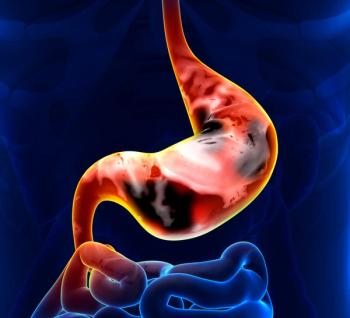
Nodal Stage Migration in Anal Cancer May Misclassify True Disease Stage
The rate of lymph node positivity in patients with squamous cell carcinoma of the anus may be overestimated, potentially leading to the overtreatment of patients with chemoradiotherapy.
The rate of lymph node positivity in patients with squamous cell carcinoma of the anus (SCCA) may be overestimated, potentially leading to the overtreatment of patients with chemoradiotherapy, according to a meta-regression analysis that included over 60 studies and more than 10,000 patients. The results were
The study showed that this patient group had a 6.8% increase in detection of lymph node positivity every 10 years during the last 30 years. This increased lymph node positivity was associated with improved 5-year overall survival in patients with both node-positive and node-negative disease, without any increase in survival for individual patients. This effect is known as the Will Rogers phenomenon.
“Our results highlight the importance of continually assessing the approaches that classify nodal status in patients with anal cancer to inform future trials of stratified treatment approaches,” wrote Hema Sekhar, MRCS, of the University of Manchester, NIHR Manchester Biomedical Research Center, United Kingdom, and colleagues. This Will Rogers phenomenon “contrasts with the generally held perception that newer staging technologies generally result in early detection or improved treatments (for example, of nodal metastases) leading to improved overall survival,” the researchers wrote.
For patients with SCCA, lymph node positivity is an adverse prognostic factor. Patients undergo pretreatment nodal staging using imaging, the likes of which have improved over the last several decades. Concurrent with the improvements in imaging, the proportion of lymph node positivity has also increased, an observation known as nodal stage migration.
To evaluate the effect of nodal stage migration on survival in SCCA, the researchers did a systematic review and meta-regression to evaluate changes in lymph node positivity over time and the effect of this change on survival and prognostic discrimination. They looked at studies in patients with SCCA between 1970 and 2016, and identified 62 studies that included 10,569 patients who received chemoradiotherapy or radiotherapy as their main treatment.
In the study, the lymph node positivity proportions increased from 15.3% in 1980 to 37.1% in 2012 (P < .0001). Data from the 11 studies that included prognostic data, showed that the increasing lymph node positivity was associated with improved overall survival for both lymph node–positive and lymph node–negative disease. In contrast, the proportions with combined tumor stage T3 and T4 remained constant.
In the 20 studies with a range of lymph node positivity proportions from 15% to 40%, the hazard ratios for node-positive compared with node-negative patients decreased significantly from 2.5 at 15% positivity to 1.3 at 40% positivity.
“The simulated models replicated the reduced prognostic discrimination, but only for true lymph node positivity proportions of 20% and 25%,” the researchers wrote. “This scenario is plausible with modern imaging, but in the simulations with lymph node positivity proportions of 30% and 35% there is no reduced prognostic discrimination, suggesting that the true lymph node positivity proportion might be lower than that observed in modern clinical series (11 out of 15 studies with median year since 2007), which generally have lymph node positivity proportions greater than 30%.”
In an
“The phenomenon described by Sekhar and colleagues deserves recognition and clearly underscores the limitations in the use of historical cohorts to compare outcomes,” they wrote. “Furthermore, the observation of reduced prognostic discrimination of nodal staging over time in patients with anal cancer is interesting and warrants further exploration in other diseases in future studies. Still, given the virtual impossibility of histologically confirming the radiological findings of nodal status in the studies analyzed due to the lack of surgical specimens, it could be argued that nodal status in anal cancer will always be merely speculative, suggesting that the study of the Will Rogers effect in this setting is really a study of the unknown.”
Newsletter
Stay up to date on recent advances in the multidisciplinary approach to cancer.


















































































